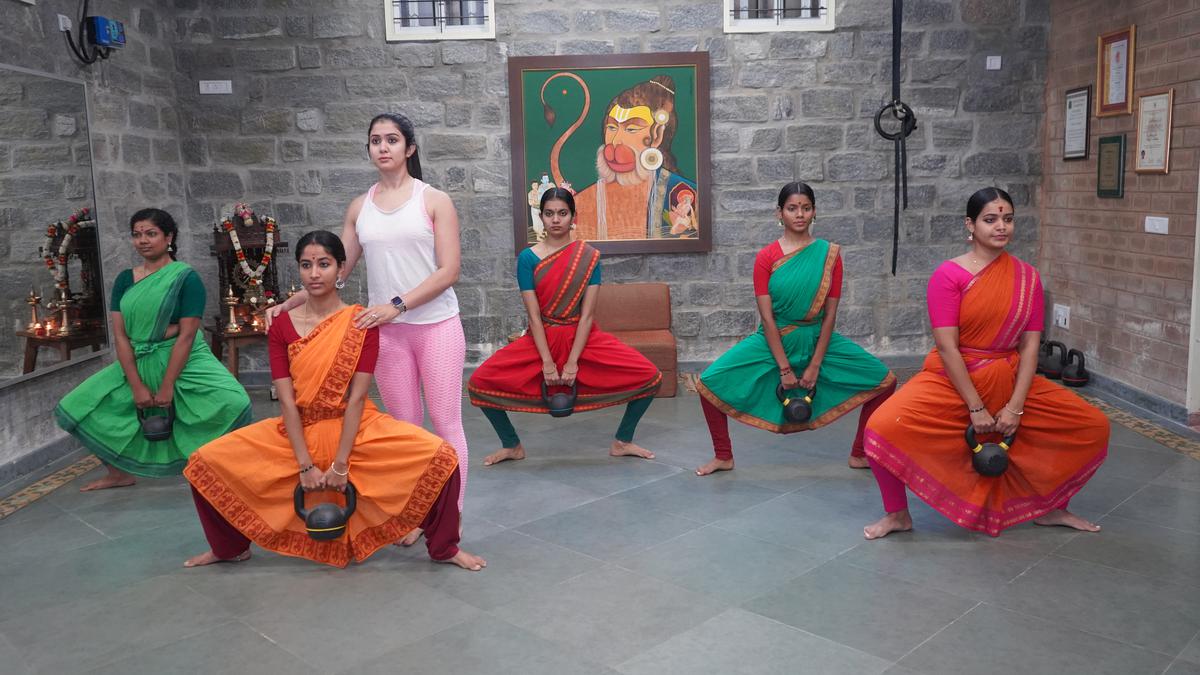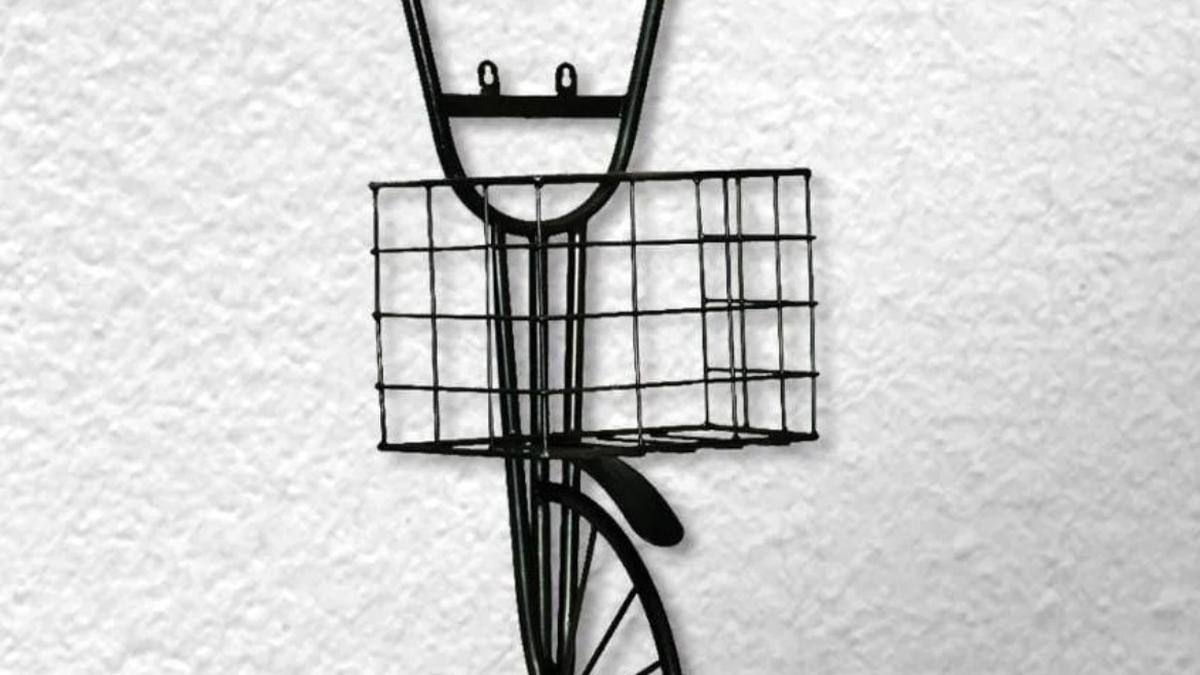For nearly a year leading up to her performance at The Music Academy’s Dance Festival last month, Medha Hari split her time between the dance studio, learning with her guru, and strength training with Adarsh Gopalakrishnan. All the practice — footwork, abhinaya (art of expression), and building muscle, flexibility and control — helped her win the Outstanding Dancer of the Year award in the Junior category. “I consciously remind myself about the importance of the process, and the need to stick with it,” says the Bharatanatyam dancer, who incorporated squats and quadriceps work to perfect a deeper araimandi (half-sitting position) that she could hold for longer, and more powerful muzhumundi (full squat) jumps. Her recovery time was faster, too.
Medha Hari’s Barathanatyam recital at The Music Academy
| Photo Credit:
Raghunathan S.R.
Hari, 32, found Gopalakrishnan’s gym, Movement Inc, in Chennai’s Valmiki Nagar four years ago, soon after the birth of her twin daughters. She was battling injuries, especially related to her back, because of the long hours spent in her studio — Bharatanatyam comprises a complex set of movements that often puts a load on the back, knees, and feet. Her current bespoke training plan, however, keeps her dance and injury circumstances in mind, and ensures she builds strength progressively. “When you move regularly, your body feels well-tuned; my physical strength has a direct impact on how I feel and dance,” she says.
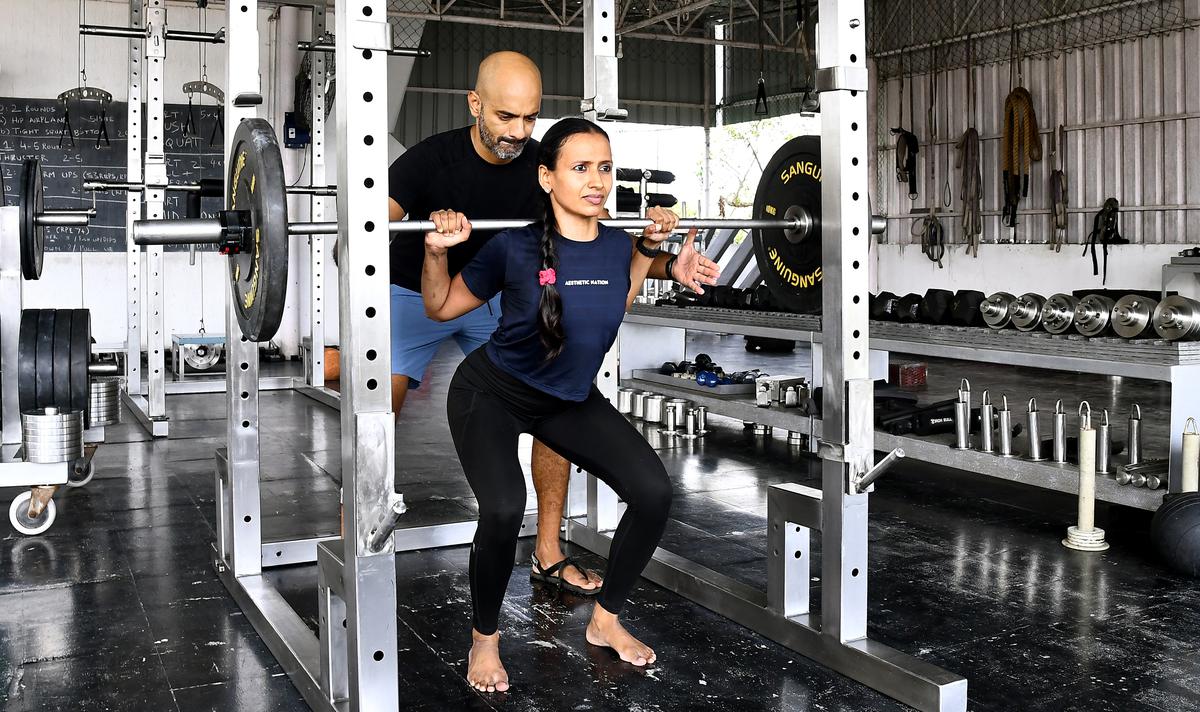
Bharatanatyam dancer Medha Hari focusing on strength training
| Photo Credit:
Ravindran R.
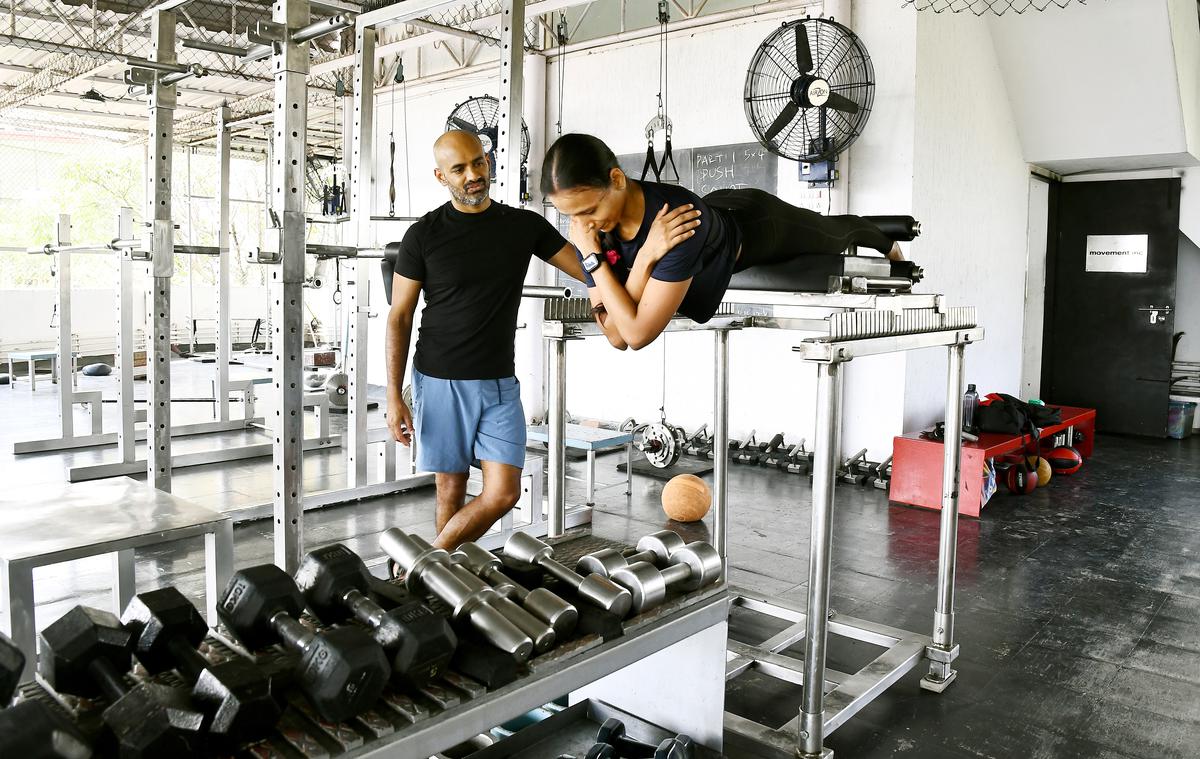
Medha Hari trains with Adarsh Gopalakrishnan
| Photo Credit:
Ravindran R.
Changing up the routine
Bharatanatyam is one of the oldest dance forms of India. Originating in Tamil Nadu in the 19th century as Sadirattam, it moved to the proscenium in the 1940s. As a visual performance art form, it has grown in size and strength across the globe. According to recent data from ABHAI (Association of Bharatanatyam Artistes of India), there are nearly 2,500 dance schools across Tamil Nadu, Bengaluru, Puducherry, Mumbai, Kerala and Delhi.
From an endurance point of view, performing a full Bharatanatyam margam (repertoire) is equivalent to running a half-marathon. With complex full-body movements that range from half-sitting to full squat positions to jumps, and bursts of intense footwork, it is intense and demanding. “For a Bharatanatyam dancer, the body is an instrument to tell a story,” says veteran artiste Malavika Sarukkai, 64. “It is crucial for dancers to keep honing it, fine-tuning it.” But even a decade or so ago it was uncommon, she admits, for dancers to do anything beyond daily practice to improve their form. “The word fitness didn’t feature in our scheme of things, neither did the word hydration,” she says, recounting stories of aching ankles, knees and back after performances. “But when I look back, I suppose there was a natural, intuitive body intelligence I danced with that saved me on rigorous practice days.” It is only recently that she’s taken a leaf from the younger generation and incorporated strength training into her dance lifestyle, recognising how it can can hone the body and improve joint health.
Sarukkai’s fellow artiste, Alarmel Valli, whose Bharatanatyam career traverses nearly six decades, shares that her training years belonged to another era: pre-information technology, pre-social media, and pre-gyms and fitness trainers. “My energy was born from focused and relentless sadhana and willpower,” she says, adding that she wasn’t spared her share of dance-related injuries, from sprains and strained ligaments, to bursitis and cervical spondylolysis. “Even after I heard about strength training in my 50s, I didn’t think it was important enough. Regrettably so.”
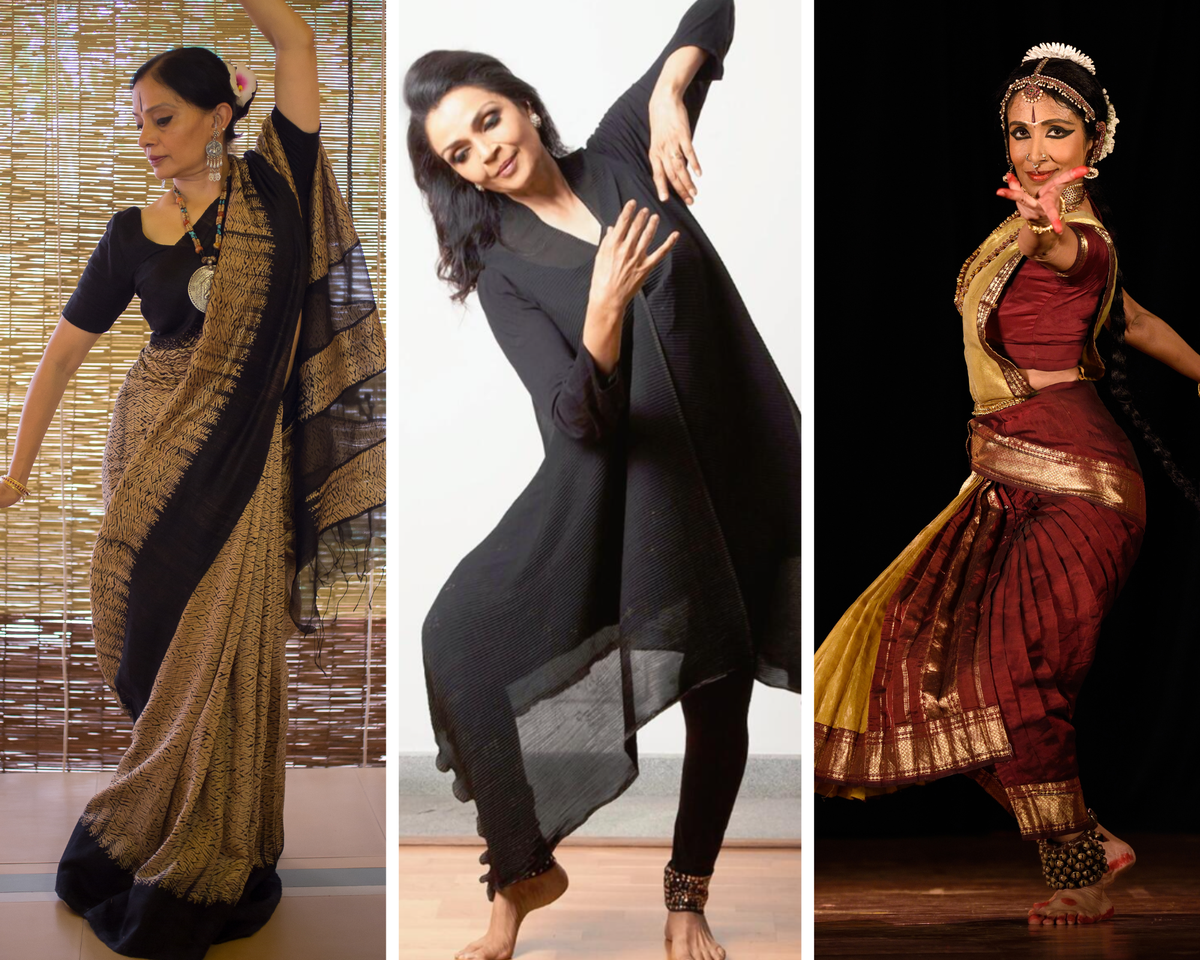
(L-R) Malavika Sarukkai, Anita Ratnam, and Alarmel Valli
| Photo Credit:
Shalini Jain, Prasanna, special arrangement
In the case of the few veterans who adopted cross-training, it was often a case of happenstance. “When I was a student [of dance], the concept of a warm-up didn’t exist,” states Anita Ratnam, 69, Chennai-based Bharatanatyam and contemporary dancer, and founder of dance portal Narthaki. “It helped that I had an active sporting life.” She recalls evenings spent playing tennis, swimming or going for a jog, which she later realised helped her with her dance. Ratnam incorporated strength training over 25 years ago thanks to taking up Kalaripayittu. “My times were different; the expectations from a dancer were different. Audiences were gentler, had more time to allow the performance to unveil slowly, for the dancer to inhabit their dance. Now, programme durations have decreased, and dancers have to grab the audience’s attention quickly, with a wow factor.” Strong, honed bodies help give performers that edge.
Anita Ratnam’s morning training
Why strength is crucial
In the last few years, dancers — who practise and teach the art form — have incorporated strength training as a consistent routine, some as early as age 15. It complements their performance, making them more agile, building lung capacity and endurance. Most importantly, it reinforces joints, and improves bone and muscle health, thus helping keep injuries at bay.
The inclusion of strength training has not only shifted the very nature of the dance — lending it power, athleticism, and physicality of movement that was unheard of earlier — but it has also enabled a whole host of practitioners to evolve structured methodologies that promise dancers a keener awareness of their bodies, and quality and longevity of dancing life.
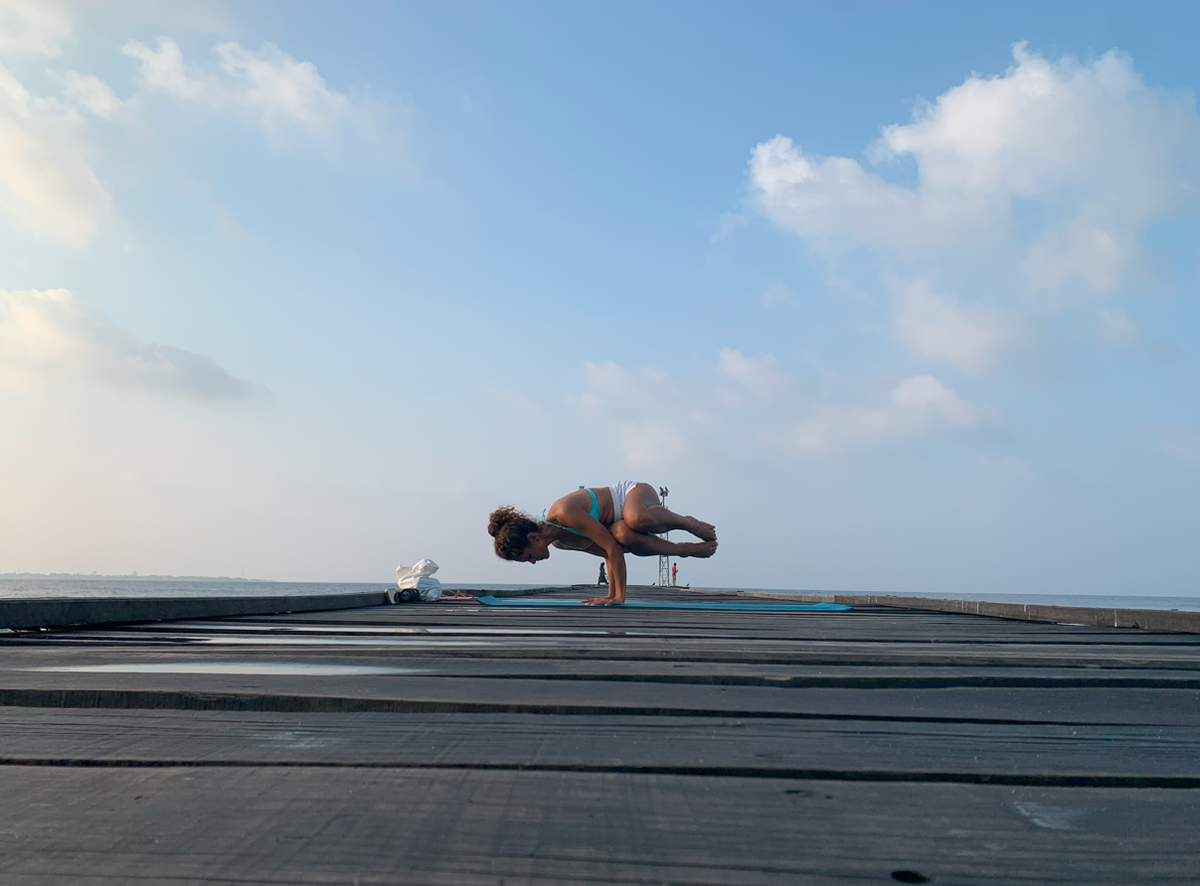
Rukmini Vijayakumar
Indira Kadambi, 54, was Gopalakrishnan’s first student who was a dancer. In 2017, the Bharatanatyam artiste, who now lives in Bengaluru, had sought him out after a knee injury, which stayed dormant for a decade, returned. “Adarsh worked on helping me strengthen my knees and build my overall endurance,” she recalls. Within eight months, she was able to perform a poorna margam for four hours.
Today, Gopalakrishnan’s clientele comprises more than 30 dancers from across India and the globe, who train in-person at his gym, or virtually. “Our approach is holistic,” he says. Since dancers deal with issues such as ankle instability, knee pain, and poor range of movement of the arms, he helps bring a sense of body self-awareness to their training. “Once I make sure all their joints are functioning well, the intent is to ensure the right exercise for each,” he says. How can they, for instance, leap more smoothly on stage, or add more power to a jump, or learn to stop with control after an intense burst of movement.
“Dancers are like athletes. Sometimes they have short bursts of intense activity, at other times, they have to endure long hours of a rigorous routine. My intent is to help them bring an athlete’s awareness of their bodies into their dance. My approach is to ensure that with each movement they strengthen and stabilise their muscles, joints, tendons, and ligaments.”Adarsh GopalakrishnanStrength training coach, Movement Inc.
For many dancers who also double as trainers, the story is personal. New York-based Madhumanti Banerjee-Varun, 29, battled with a recurring injury in her upper and lower back. “That was in 2014,” she says, “and my friend, a physical therapist, showed me the importance of understanding one’s body to prevent injuries.” Varun took the advice seriously and went on to study and certify as a coach from the National Academy of Sports Medicine. Her focus is to better understand the body and its biomechanics to help the dancer community; she will soon be offering her online programmes as in-person sessions in NYC.
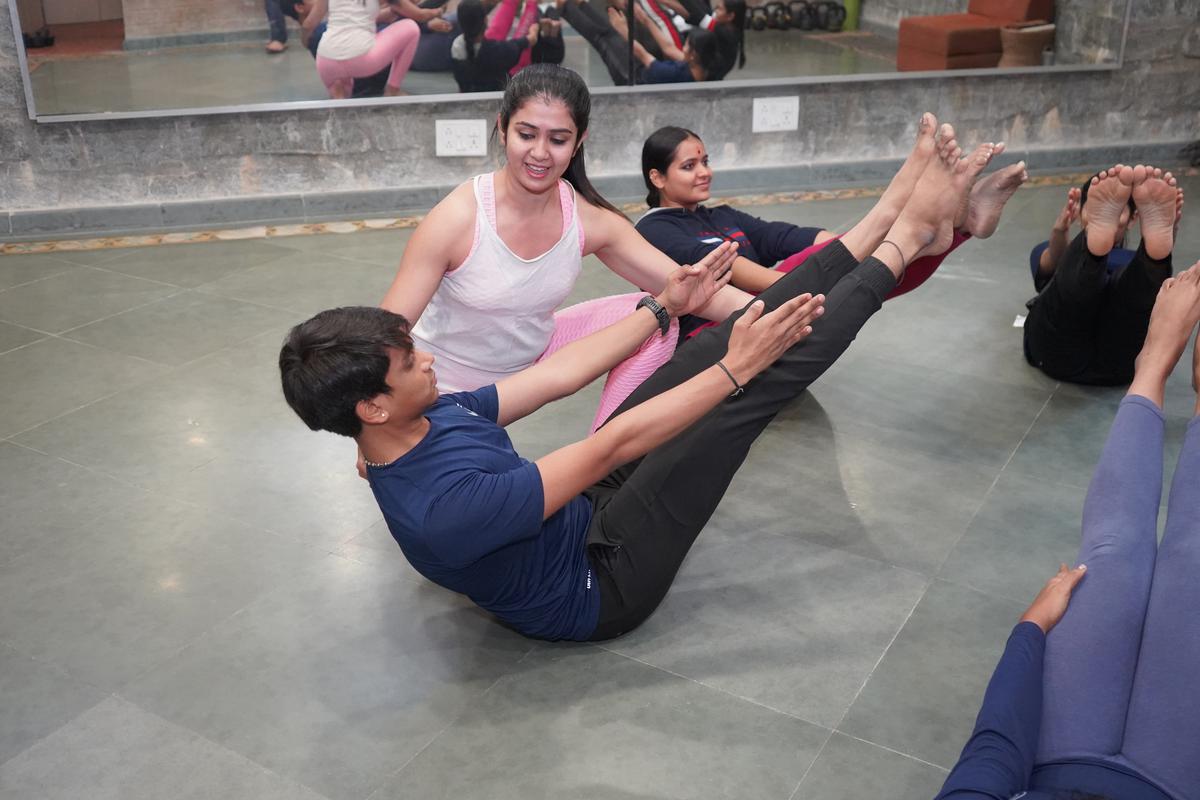
Madhumanti Banerjee-Varun training her students
Closer home, Kolkata-based contemporary and Bharatanatyam dancer Nilava Sen, 30, grew up going to a gymnastics class every evening with his father and doing pranayama with his mother in the morning. His training at the Tanusree Dance Academy, where he studied the Uday Shankar technique — a fusion style of dance that adapts European theatrical techniques to Indian classical — helped him deep dive into the practice of yoga. This technique allowed Sen a better understanding of how to use its principles to enhance his dance. As a teacher, he now works with classical dancers who log in thrice a week, where the focus is on muscle strengthening, enhancing energy, and achieving body balance. “I believe that like our face, every single muscle in the body can also tell a story,” says Sen.
What a dancer needs
Bengaluru-based dancer and choreographer Rukmini Vijayakumar, 42, who has a large following on Instagram, remembers her teenage years, practising araimandi for prolonged periods and the onset of knee and ankle pain. It was while doing yoga and learning ballet that she began to recognise the lack of anatomical awareness in the training of Bharatanatyam.
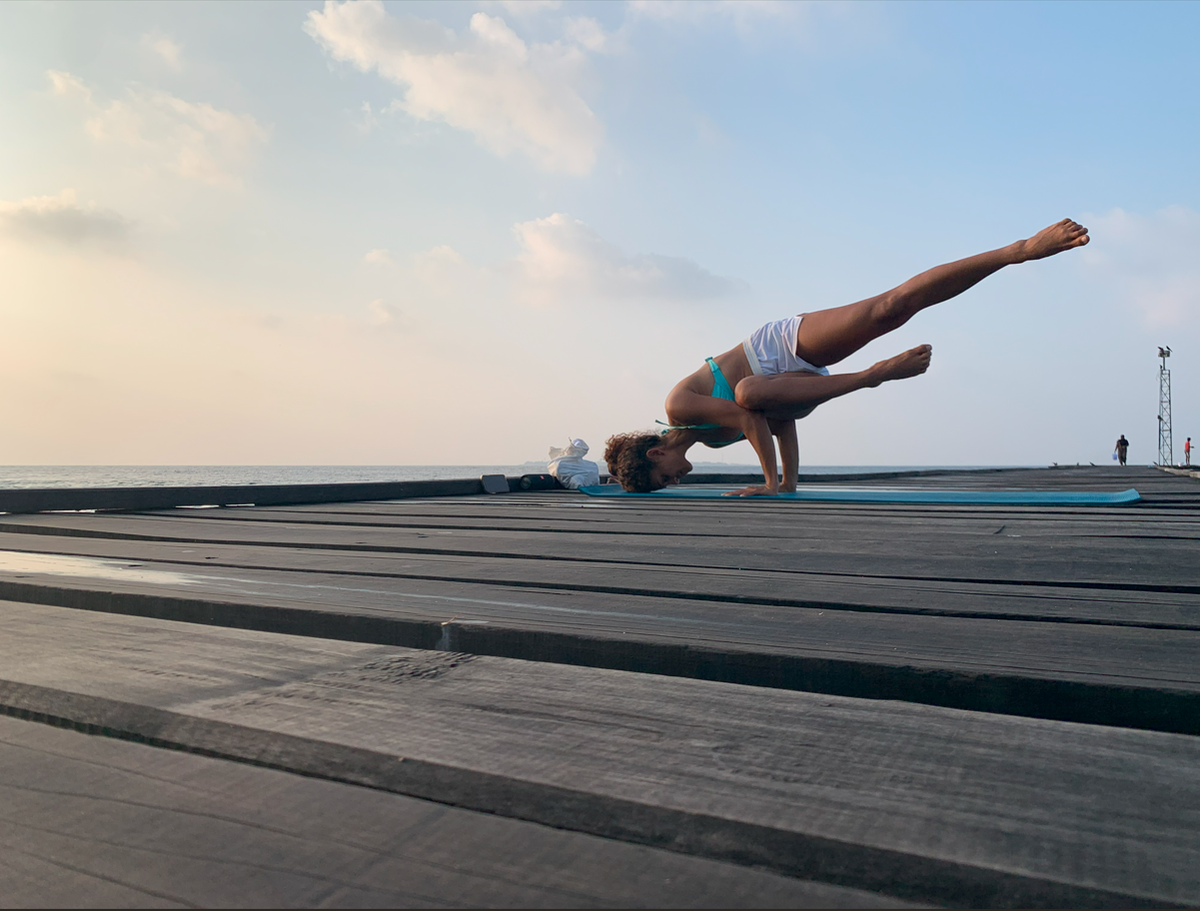
Rukmini Vijayakumar
After spending years attempting to fill this gap, and shift her training from a skill-based progression as is often taught in a regular class, Vijayakumar has evolved a pedagogy called Raadha Kalpa that places the body at the epicentre. “I began asking important questions like what does the body need before it performs a movement. Do the hamstrings need to be warmed up, does the core need to be engaged?” Through the week, she follows her pedagogy, doing yoga for flexibility, running to improve cardio-vascular health, and lifting weights to build strength, in addition to carving out time for her practice of dance and choreography, and for leisure — all of which one needs to be able to dance.
Meanwhile, Mumbai-based Gautam Marathe — who signed up to study Bharatanatyam under the watchful eyes of Vaibhav Arekar and the Sankhya Dance Company in 2015 — recalls being shocked at how little time dancers spent on warming up. “I was fresh off a year-long training in ballet with [choreographer] Ashley Lobo, where the emphasis on strengthening, flexibility, movement-based exercises and isometric holds occupied a large part of my schedule,” he says. “We danced only after preparing the body for it.”
Following a series of conversations with his teacher, he embarked on a project while on tour in Poland in 2019. He broke down specific adavus (movements) in the Bharatanatyam vocabulary to address muscles that dancers used, and over time, constructed a module that helped them strengthen specific and collective muscle groups. In March 2020, just as the world went into lockdown, the curtains went up on Aangika, a cross-training holistic module for dancers. The virtual entity, now with in-person sessions, has grown in size and sign-ups, becoming the go-to class for Indian classical dancers across genres. “I have worked with over a 1,000 dancers from across dance forms like Bharatanatyam, Kathak, Odissi, and even Mohiniyattam over the last four years,” he says.
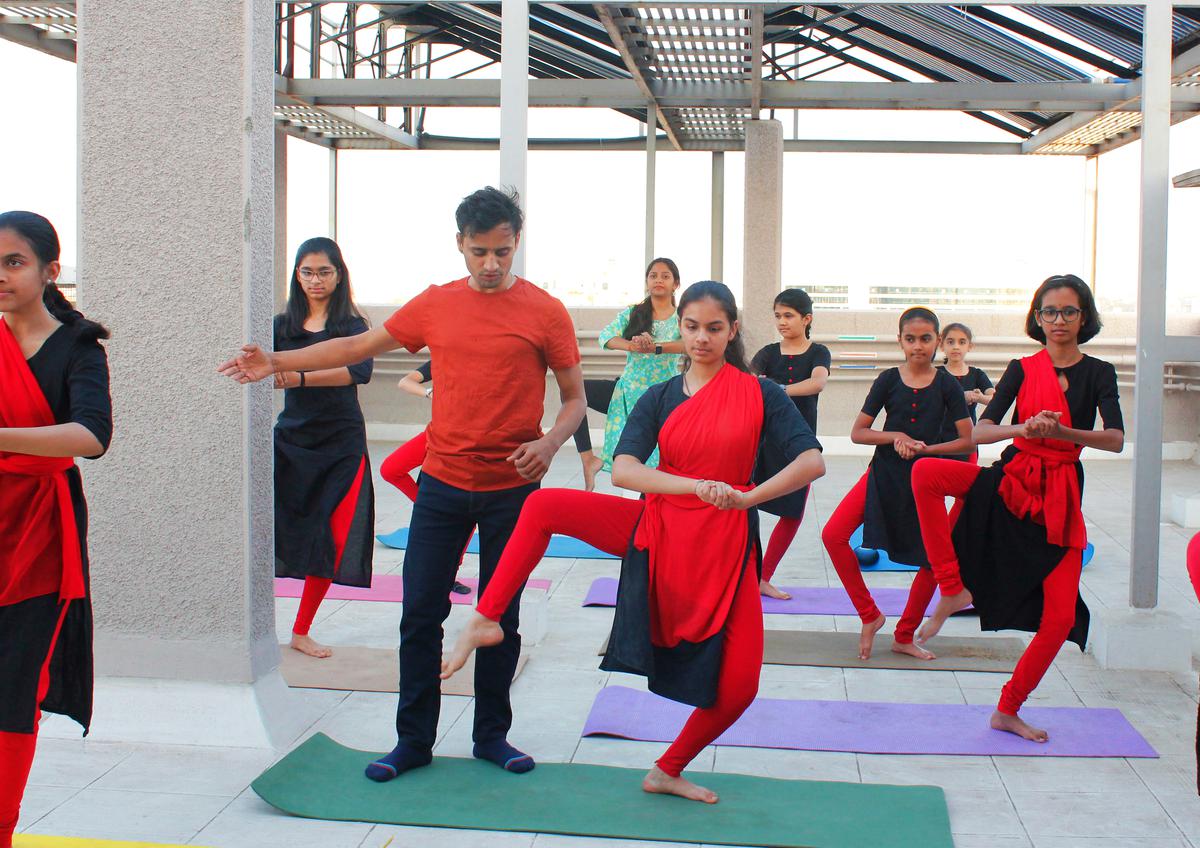
Gautam Marathe focuses on body weight-based training
Aesthetics and body image
Strength training, Pilates and yoga have always been part of training for dance forms such as ballet. “As an art form, ballet has a specific athletic aspect to it, but it has no elements such as storytelling that rely on abhinaya like in Bharatanatyam,” says Mavin Khoo, 47, an exponent of Bharatanatyam and ballet, who trains and mentors artistes in both forms as creative associate of the Akram Khan Company in London. “So, the reliance of a ballet dancer on their body to communicate either a story or a sense of abstraction, is almost primal.”
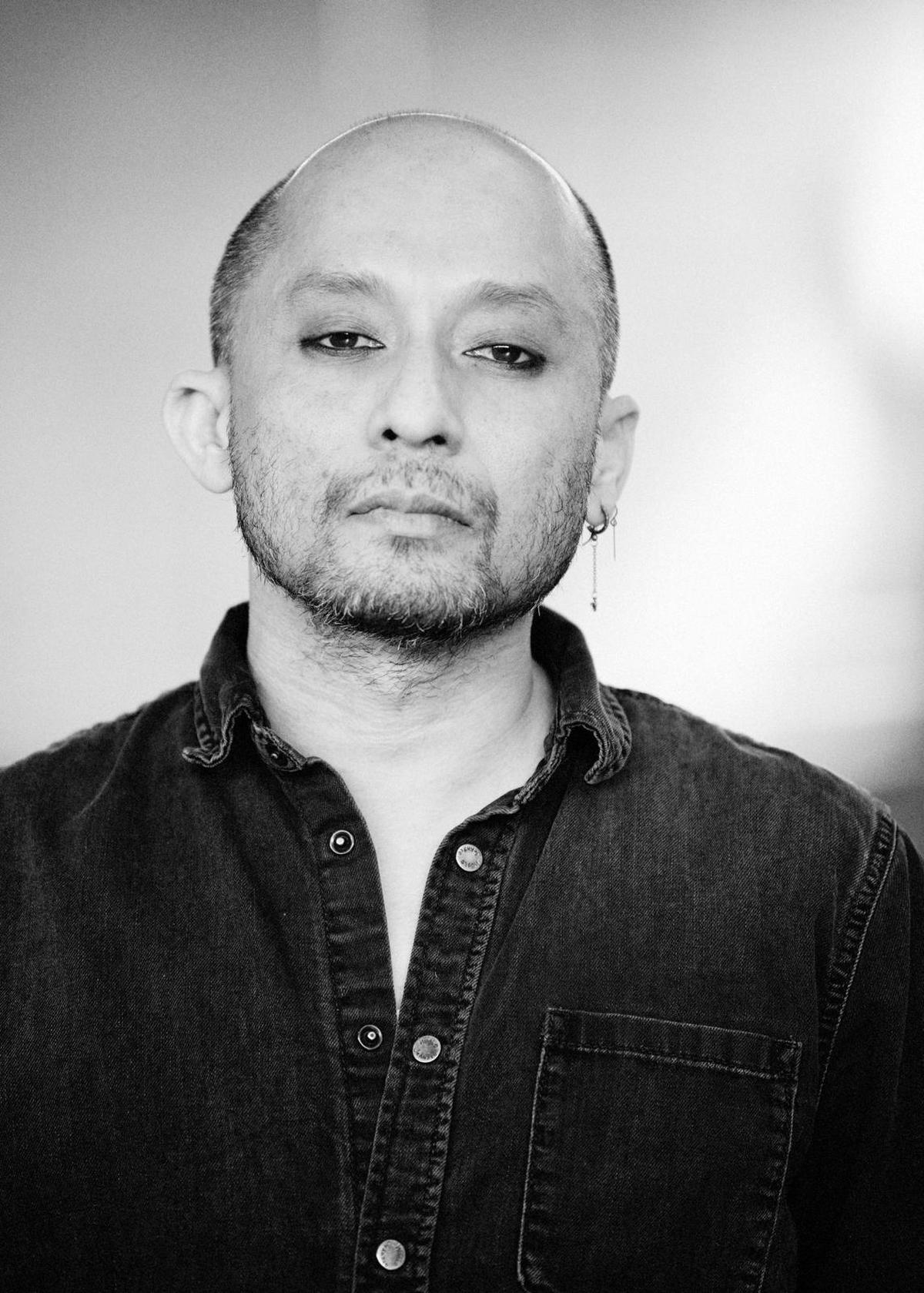
Mavin Khoo
But the same can’t be said about most classical dance forms in India. As of now, Bharatanatyam, with its larger pool of practitioners, is taking to strength training most intensely. Khoo believes this trend is also a response to a shifting global culture that has increasingly “become body-focussed, which has nothing to do with dance”. Ratnam agrees. “Alongside the increased athleticism that classical dance demands, the aesthetics surrounding the form have also changed. It’s a new world now of reels and Instagram, where the attention span is only for 30 seconds. A lot of dancers are staking their social media as reputation for gigs. So, I think this kind of fitness and athleticism is in demand.”
However, she brings in a note of caution — of body shaming. “What are we saying about the dance body and our visual aesthetics? Even though we recognise that we should not body shame, somehow the first impression often has to do with whether the dancer is in shape or not,” she says. “So, are we demanding a certain kind of body type or are we looking for a kind of natural fluidity and performance energy that transcends strong legs, biceps and muscles?”
The independent journalist is the founder of arts management company Aalaap.


